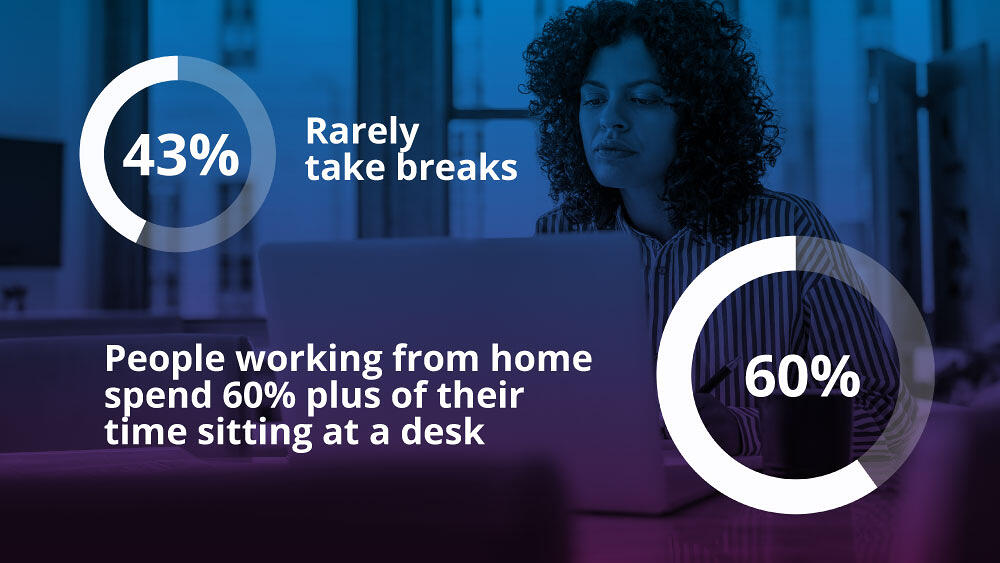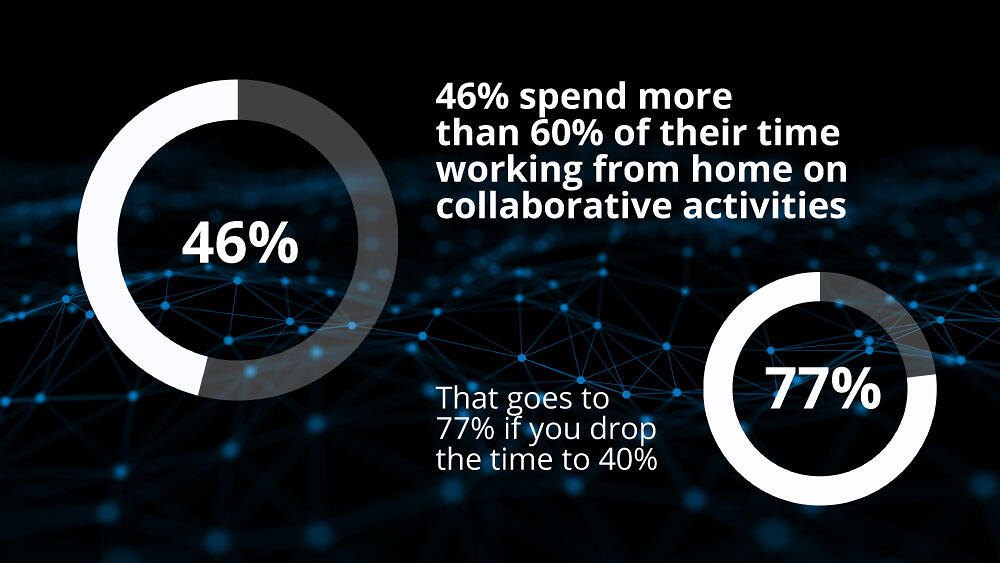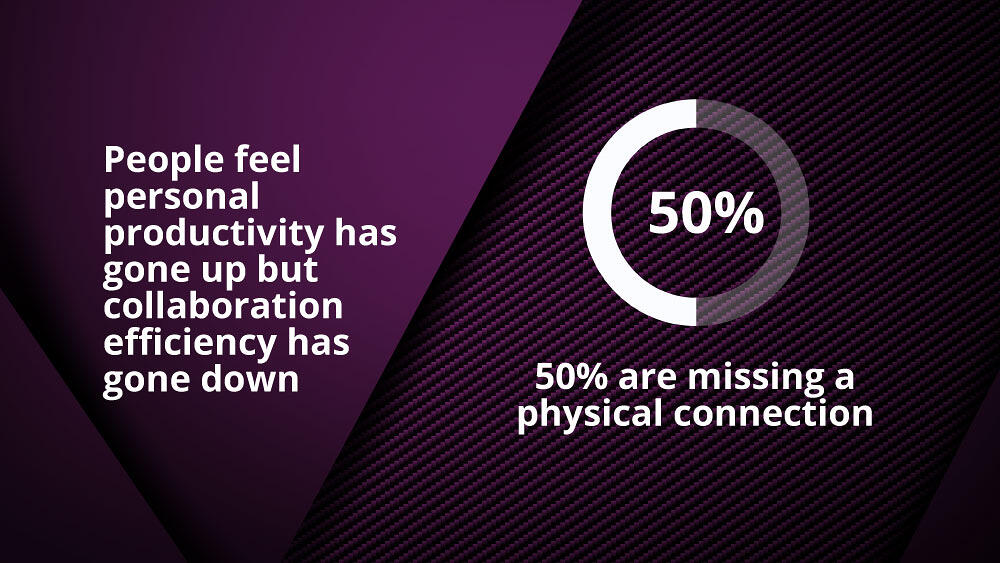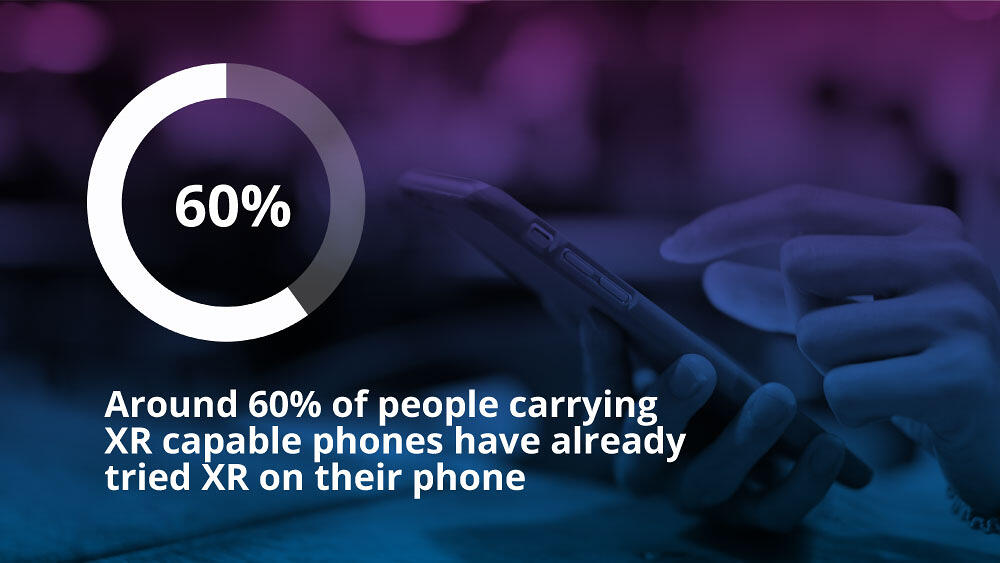Time was when virtual and augmented reality was regarded as simply gaming technology — the preserve of fun, consumer applications with little serious consideration for the enterprise. But that’s in the past, in the post-COVID world, remote working will be ubiquitous — forcing enterprise leaders to find innovative ways to improve collaboration. This, it transpires, is the sweet spot for what’s termed enterprise XR (extended reality) — a group of related technologies that enable us to blend the physical and digital worlds.
This urgent need to enrich remote working practices has been accompanied by the rapid evolution of XR-enabled devices. The once ugly, heavy and impractical smart glasses and heads-up displays are being superseded by a new generation of sleek devices, which have dissolved the barrier to adoption.
Remote fatigue
COVID-19 has forced us into new behaviours, one of which is working from home, leading to long hours on Zoom, or other video conferencing platforms and little to no personal interaction with our colleagues .


Meetings, workshops, conferences, and webinars are happening in the same virtual — and often monotonous — ways. We’re stuck with a screen in almost the same pose and posture. Most of the time sitting down, which may well have longer term health consequences. “According to the American Psychological Association (APA) remote, and in many parts of the world, isolated online working also has psychological effects: feelings of apathy, anxiety and even depression have been reported since the onset of COVID-19.
More specifically, why do we experience the virtual meetings as more energy consuming than meeting our colleagues and clients face-to-face? Psychologists emphasise that this is because of lack of social and nonverbal cues, which can form as much as 80% of human communication. Combined with social isolation, it is all the more important to focus on mental health alongside physical health”, says Anna Bäckström, Principal of Consumer Science at Fourkind, part of Thoughtworks, and Adjunct Professor of Social Psychology at the University of Helsinki.
Even now with the re-opening of offices around the world, it will be difficult to go back to business as usual, while maintaining the social distancing norms. With constraints here to stay for the foreseeable future, it’s time to shape and rethink new ways of working and interactions.
Can XR help here?
XR provides a strong opportunity to extend our world from 2D to 3D, and, by adding wearables to the experience, to simulate a ‘real life’ experience. But could this be used in a valuable and productive way in a work environment?
At Thoughtworks, we built an XR incubation center that lets us conduct XR experiments, while collaborating on agile development practices like TDD (test driven development) and CI/CD (continuous integration/continuous delivery) for XR, we have also open-sourced a test automation framework named Arium to fast track XR application development. All this work with XR tech has helped us understand the space more deeply. Recently our CMO sponsored the incubator to explore how XR could improve team working in a virtual environment. This resulted in us building an app called ThoughtArena, an augmented reality-based mobile app, that allows users to create a multi media space with virtual boards in which to collaborate. With this experiment, we wanted to test our hypothesis that XR can improve engagement, enjoyment, creativity and productivity while working remotely.
We engaged with just under 60 users to test their experience and reactions to the ThoughtArena tool. The testing was split into two parts, a qualitative and quantitative test. The quantitative one focused on usability and the experience itself, and the qualitative one focused on the behaviour and expression of the users while they were using the app.


Users found collaborating on a whiteboard in an AR (augmented reality) environment more interactive, enjoying the freedom of being able to move around their space to do this wherever they were, in their living room, office, kitchen or even outside. It’s common knowledge that changing your environment and moving around leads to improved creativity and productivity, which is made possible with AR’s flexible usage.
This improved interaction is driven by the fact that XR tech’s spatial solutions allow users to fully immerse themselves in the virtual environment and interact in a more natural way. In comparison to a video call, or more traditional methods of online training or meetings, which mostly require people to be in the physical environment, the AR equivalent is only limited by the individual's imagination.


The user testing showed that the augmented board gave people a sense of a real physical board. Furthermore users stated an increase in creativity and productivity due to the opportunity to share ideas via images, videos or text notes and not just sticky notes on a physical whiteboard. Some users videoed their experience while testing the app as you can see here.
Challenges of an evolving industry
While XR spatial apps may provide a remedy for Zoom fatigue and lead to a more healthy and interactive work style, there are some challenges to be aware of too.
We need to be careful while designing such interactions, for several reasons. One is that too much movement may cause physical fatigue by holding or wearing devices that bring the user into the extended reality and this could negatively affect the users creativity and concentration levels.
We must also be aware of the physical space available in order to minimise the risk that users might fall if they are in an immersive environment and not conscious of the real environment while interacting with virtual objects. With advanced phones with Lidar sensors, you can also detect objects in the environment and warn users of obstacles,or guide the user forwards safely.


And last, but not least, phone based XR applications, where the user needs to hold a phone in an awkward position for a longer duration, could cause a strain onhands and arms. This can be addressed by focusing on HMDs (head mounted displays), rather than purely phone-based applications. However, these HMDs are still a long way away from becoming mass market ready. We see a very good first attempt with Oculus Quest, however this is just the first of its new generation and older versions still lack precision. We are looking forward to seeing more progress in this space.
XR tech is evolving at such a rate that the untapped potential boggles the mind. The standards and practices are growing from the learnings and experiments the industry is undertaking, but there are still many standards and practices that need to be defined for real immersion.
What's next and where to start?
Hybrid and home working is likely to be one of the structural changes that persists well beyond 2020 (Forrester, Predictions 2021: Remote Work, Automation, And HR Tech Will Flourish). Technology will have a role to enable this mode or work beyond the video conferencing experiences of today. From our study, whilst some challenges were uncovered, AR technologies will no doubt have a value creating role going forward. If you or your company decides to experiment with XR as a potential solution to tackle the changing customer experience and expectations that you face now, start small.
Start by creating awareness. Experience the devices, set up studio environments in the organization to give people the opportunity to learn via incubated practices or hackathons. By doing this, you will drive innovation and generate ideas and MVPs (minimum viable products) for products and solutions that are customer first, after all, XR is all about the user experience. From there invest in capability building, and up-skilling your people in the sales/pre-sales area.
In an evolving digital landscape, XR technology will play an ever-increasing role, so the time to begin your exploration is now. If you’d like to experience our ThoughtArena experiment — get in touch. We’d love to share it and get your feedback.















